How To Find The Maximum Number Of Real Zeros
How To Find The Maximum Number Of Real Zeros - Max Zeros Max Turining Points of a Polynomial Function Find the maximum number of real zeros maximum number of turning points and the maximum x intercepts of a Use Descartes Rule of Signs to determine the maximum number of possible real zeros of a polynomial function Solve real world applications of polynomial equations A new
How To Find The Maximum Number Of Real Zeros
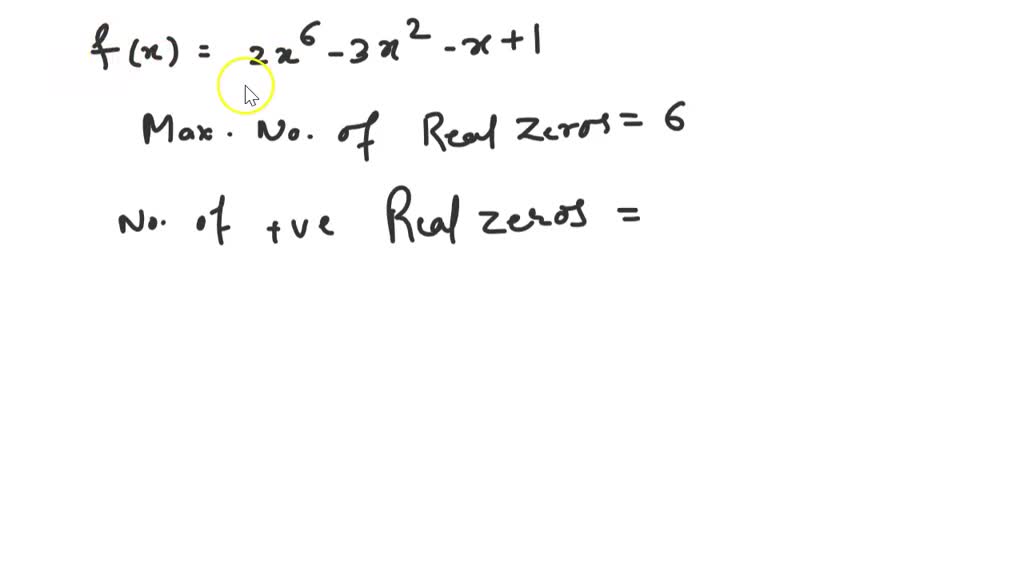
How To Find The Maximum Number Of Real Zeros
There are 2 or 0 positive real zeros; there is 1 negative real zero. For f(x) = x3 − 7x2 + x − 7. All of the real zeros lie in the interval [−8, 8] Possible rational zeros are. Welcome to the Descartes Rule of Signs Calculator. This intuitive tool will find the maximum number of a polynomial's positive and negative real zeros. Descartes' Rule of Signs.
Methods For Finding Zeros Of Polynomials College
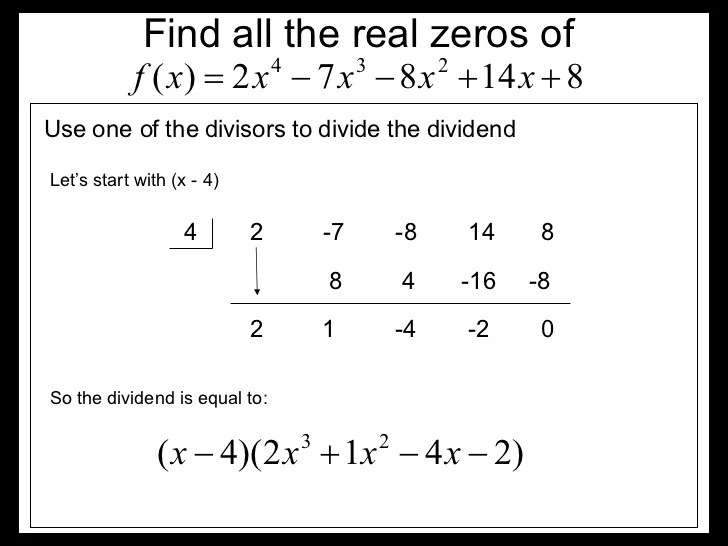
How To Find Zeros Of A Polynomial Function Calculator SHO NEWS
How To Find The Maximum Number Of Real ZerosDetermine an interval which contains all the real zeros of \(f(x)=3x^{3} -12x^{2} +6x-8\). Answer. The maximum coefficient in absolute value is 12. Cauchy’s. Given a Polynomial Function Find All of the Zeros Brian McLogan This video shows you how to quickly determine the maximum number of zeros that a polynomial function can have
Use the Rational Zero Theorem to find rational zeros. Find zeros of a polynomial function. Use the Linear Factorization Theorem to find polynomials with given zeros. Use. Answered Tell The Maximum Number Of Zeros That Bartleby SOLVED Determine The Maximum Number Of Real Zeros That Each Polynomial
Descartes Rule Of Signs Calculator EMathHelp

Solved Tell The Maximum Number Of Zeros That The Polynomial Chegg
We find three real zeros, \(x=1-\sqrt{2}=-0.414 \ldots\), \(x=1+\sqrt{2}=2.414 \ldots\), and \(x=5\), of which only the last two fall in the applied domain of \([0, 10.07]\). We choose \(x = 0\), \(x = 3\) and \(x =. Max Zeros Max Turining Points Of A Polynomial Function YouTube
We find three real zeros, \(x=1-\sqrt{2}=-0.414 \ldots\), \(x=1+\sqrt{2}=2.414 \ldots\), and \(x=5\), of which only the last two fall in the applied domain of \([0, 10.07]\). We choose \(x = 0\), \(x = 3\) and \(x =. Solved Find The Degree Leading Coefficients And The Chegg Solved Tell The Maximum Number Of Zeros That The Polynomial Chegg
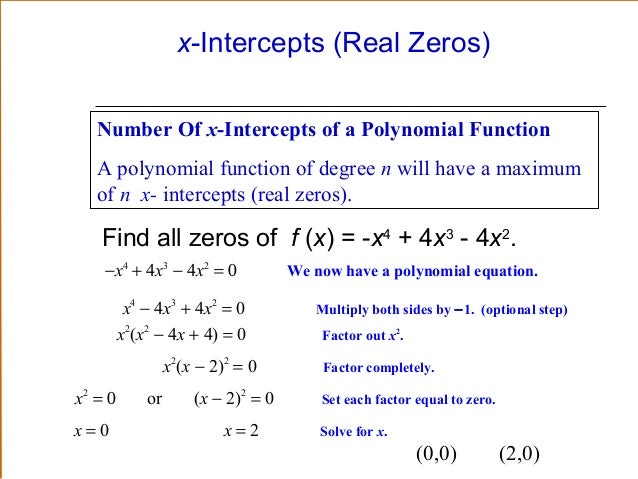
Polynomial Functionsandgraphs

Determine The Maximum Number Of Zeros Of A Polynomial Function YouTube

Ex Find Key Information About A Given Polynomial Function YouTube
Solved Tell The Maximum Number Of Zeros That The Polynomial Chegg

Finding The Number Of Total Zeros Real Zeros And Imaginary Zeros Of A

Tell The Maximum Number Of Zeros That The Polynomial Function May Have
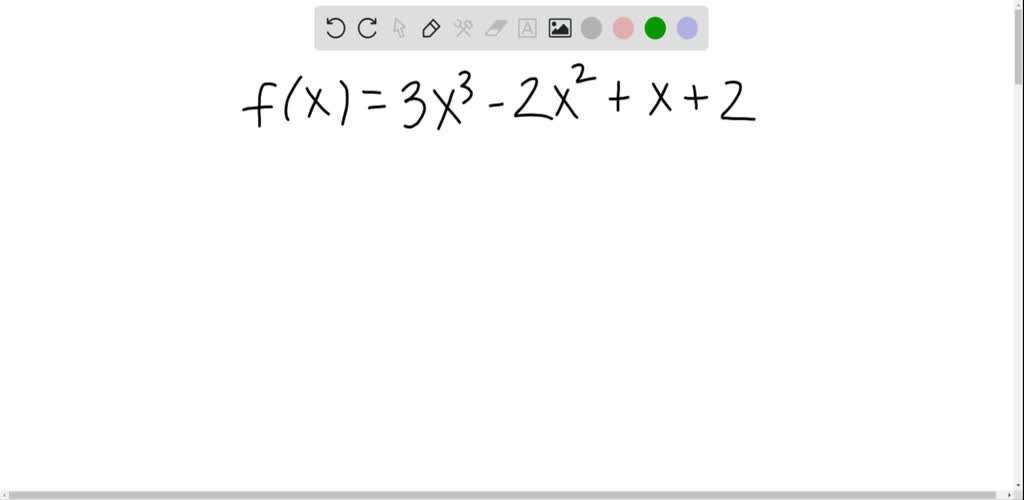
SOLVED Tell The Maximum Number Of Real Zeros That

Max Zeros Max Turining Points Of A Polynomial Function YouTube
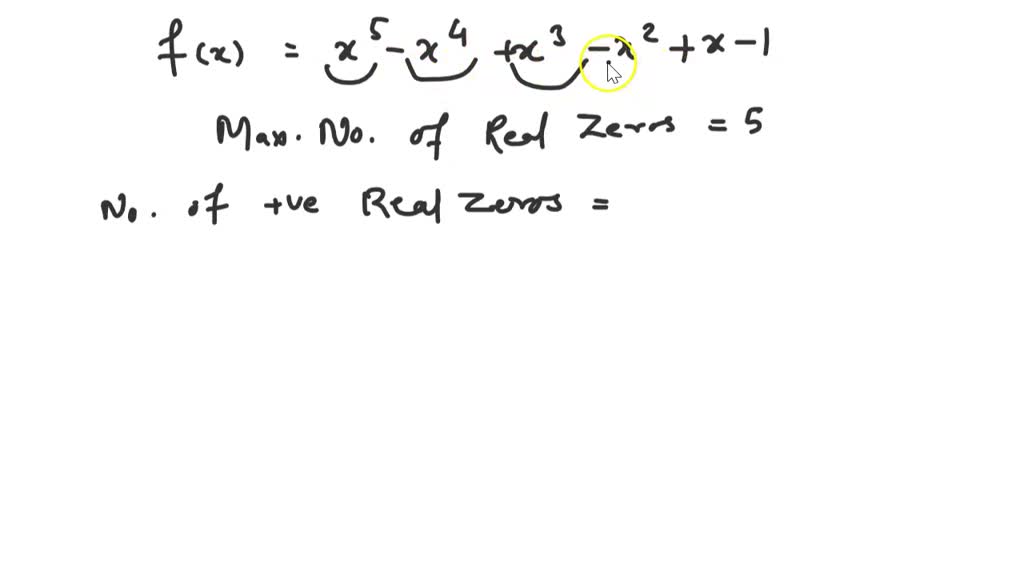
SOLVED Tell The Maximum Number Of Real Zeros That Each Polynomial
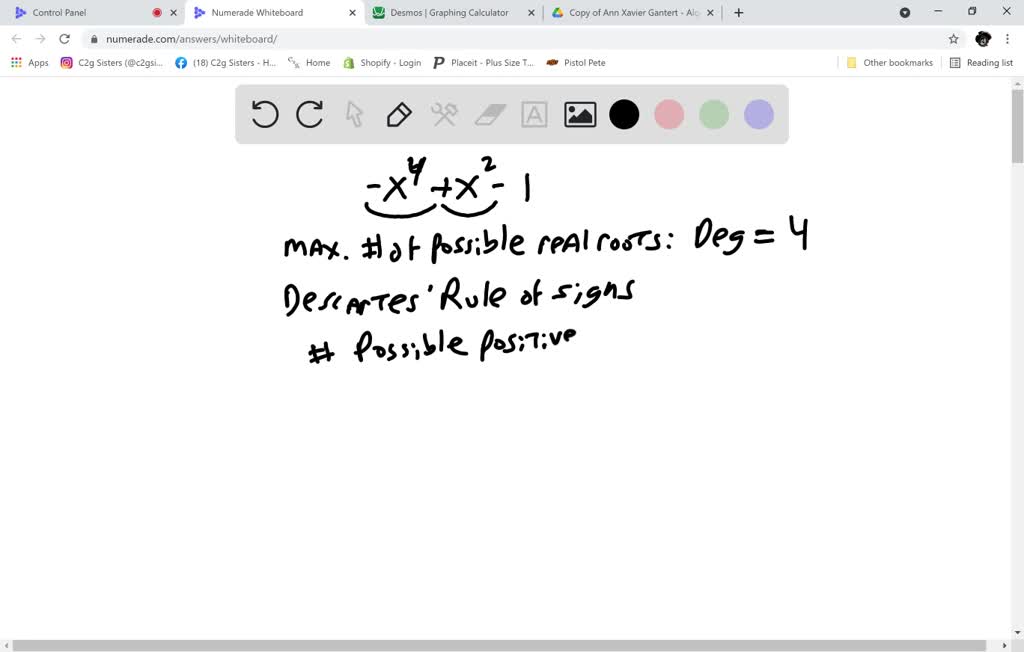
SOLVED Determine The Maximum Number Of Real Zeros That Each Polynomial
